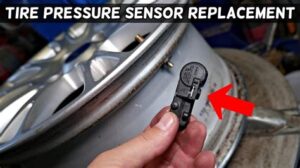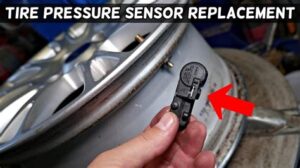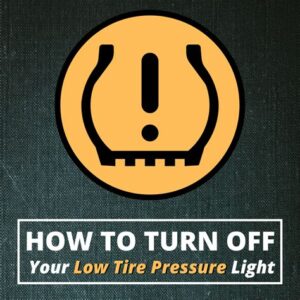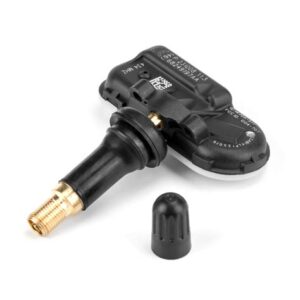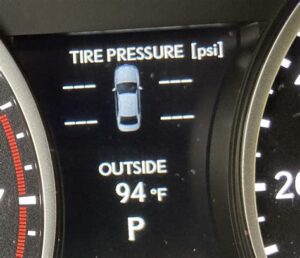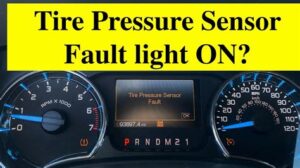Discover the essentials of Bluetooth tire pressure sensors, their benefits, installation tips, and how to choose and maintain the right system for your vehicle.In today’s fast-paced world, ensuring vehicle safety and performance has never been more critical, and a Bluetooth tire pressure sensor (TPMS) is an innovative solution that brings added convenience to drivers. These smart devices monitor tire pressure in real-time, offering invaluable insights directly to your smartphone or dashboard display. With a Bluetooth TPMS, you’re not just investing in your vehicle’s health; you’re also enhancing fuel efficiency and prolonging tire life. In this blog post, we will explore what a Bluetooth tire pressure sensor is, the significant benefits it offers, and how to install one in your vehicle. Additionally, we will guide you on choosing the right TPMS for your needs and share essential maintenance and troubleshooting tips to keep your system running smoothly. Step into the future of vehicle maintenance with us as we delve into the world of Bluetooth tire pressure sensors!
What is a Bluetooth tire pressure sensor?
A Bluetooth tire pressure sensor is a sophisticated device designed to monitor the air pressure inside your vehicle’s tires in real-time. Unlike traditional tire pressure monitoring systems (TPMS) that utilize direct or indirect methods, a Bluetooth TPMS employs wireless technology to transmit tire pressure data directly to your smartphone or a dedicated display unit.
These sensors are typically mounted to the valve stem of each tire and are equipped with a battery that allows them to operate for several years without replacement. The Bluetooth connectivity enables easy access to vital tire information without the need for traditional wired systems.
Key Features of Bluetooth Tire Pressure Sensors:
- Real-Time Monitoring: Constantly measures tire pressure and alerts the driver of any irregularities.
- Easy Installation: Generally simple to install, often without the need for specialized tools.
- Smartphone Compatibility: Connects to mobile devices, providing an easy-to-read interface and notifications.
- Battery Life: Long-lasting batteries that typically last for several years.
In summary, a Bluetooth tire pressure sensor is an essential component of modern vehicle safety, ensuring that you are always aware of your tire conditions and can maintain optimal performance during your travels.
Benefits of using Bluetooth TPMS
Bluetooth Tire Pressure Monitoring Systems (TPMS) have gained significant popularity in recent years, offering numerous advantages over traditional tire pressure monitoring systems. By utilizing wireless technology, Bluetooth TPMS delivers real-time data directly to your smartphone or dashboard display. Here are some of the key benefits of using Bluetooth TPMS:
- Real-time Monitoring: With Bluetooth TPMS, drivers can receive instantaneous updates on their tire pressure. This helps in identifying any potential issues before they become critical.
- Convenience: Bluetooth-enabled devices link seamlessly with smartphones, making it easy to check tire pressure without any hassle. This user-friendly approach enhances the overall driving experience.
- Enhanced Safety: Proper tire pressure is crucial for safe driving. A Bluetooth TPMS alerts drivers to any abnormal tire conditions, significantly reducing the risk of accidents caused by under-inflated or over-inflated tires.
- Fuel Efficiency: Maintaining the correct tire pressure through a Bluetooth TPMS can lead to improved fuel efficiency. Properly inflated tires reduce rolling resistance, allowing vehicles to consume less fuel.
- Extended Tire Lifespan: Regular monitoring of tire pressure can help mitigate uneven wear and tear. Proper inflation can extend the life of your tires, saving costs on replacement.
- Easy Installation: Many Bluetooth TPMS models are designed for simple installation. Most systems require minimal tools and can be set up in a short period, making them accessible for all drivers.
- Data History: Bluetooth TPMS often includes a historical data feature, allowing users to track tire pressure trends over time. This information can be beneficial for troubleshooting potential issues and planning maintenance.
In summary, the benefits of using a Bluetooth tire pressure monitoring system are clear. From improving safety and fuel efficiency to extending the life of your tires, Bluetooth TPMS offers a modern solution for vehicle maintenance that every driver can appreciate.
How to install Bluetooth TPMS
Installing a Bluetooth Tire Pressure Monitoring System (TPMS) can significantly enhance your vehicle’s safety and performance. Below, we walk you through the necessary steps to ensure a smooth installation process.
What You Will Need:
- Bluetooth TPMS Sensors (usually comes in a kit)
- Smartphone or Bluetooth-enabled device
- Vehicle Tools (jack, tire iron, etc.)
- Instruction Manual (provided with the TPMS)
Step-by-Step Installation Guide:
- Safety First: Ensure your vehicle is parked on a flat surface. Activate the parking brake for safety.
- Remove the Tires: Using a jack, lift the vehicle and remove the tires where you want to install the sensors. This step is usually required for the tire’s valve stem access.
- Install the Sensors:
- Locate the valve stem on each tire.
- Remove the cap from the valve stem.
- Install the Bluetooth sensor onto the valve stem securely, ensuring that it’s tight but not overly so to avoid damage.
- Reattach the Tires: Once all sensors are installed, reattach the tires securely. Make sure all lug nuts are tightened appropriately.
- Turn on Your Vehicle: Start the vehicle to ensure the TPMS sensors power on and communicate with your device.
- Pair with Your Device:
- Open the related app on your smartphone.
- Follow the app instructions to pair your Bluetooth TPMS sensors.
Final Checks:
Once paired, monitor the app for pressure readings. Make sure that all sensors are displaying accurate pressure data. If there are any issues or dash warning lights, refer to the instruction manual for troubleshooting.
By following these steps, you should have your Bluetooth TPMS installed quickly and efficiently, providing you with real-time tire pressure information at your fingertips.
Choosing the right Bluetooth TPMS
When it comes to selecting a Bluetooth tire pressure monitoring system (TPMS), understanding your needs and the features available is crucial. With various options in the market, you may find it challenging to pick the right one. Below are some key factors to consider when making your decision:
1. Compatibility
Ensure the Bluetooth TPMS you choose is compatible with your vehicle. Not every system fits all vehicles, so double-check the specifications and compatibility list provided by the manufacturer.
2. Sensor Quality
The quality of the sensors plays a significant role in the performance of your TPMS. Look for systems that use durable materials and come with high-precision sensors, ensuring accurate tire pressure readings.
3. Range and Connectivity
The range of the Bluetooth connection matters, especially if you have multiple vehicles. Opt for systems that provide a sturdy connection with a range that suits your needs.
4. Ease of Installation
Choose a Bluetooth TPMS that is easy to install. Some models require professional installation while others can be set up by the user without much hassle. Look for systems that come with comprehensive installation guides.
5. App Functionality
A good Bluetooth TPMS should have a user-friendly companion app. Check for features such as:
- Real-time pressure and temperature monitoring
- Low-pressure alerts
- Battery level indications
- Data logging and reporting
6. Battery Life
The longevity of the sensor’s battery is essential. Choose systems that offer longer battery life, ideally more than two years, to reduce maintenance and replacement hassles.
7. Price
While it may be tempting to go for the cheapest option, be sure to consider the value it offers. Compare features and prices among different brands to find the best deal that meets your needs without compromising quality.
8. Warranty and Customer Support
Look for Bluetooth TPMS that come with a warranty and reliable customer support. This will provide peace of mind in case any issues arise after your purchase.
“Choosing the right Bluetooth TPMS not only enhances your driving safety but also optimizes your vehicle’s performance.”
By keeping these factors in mind, you’ll be well-equipped to make an informed choice about which Bluetooth tire pressure monitoring system is right for you. Happy driving!
Maintenance and troubleshooting tips for Bluetooth TPMS
Maintaining your Bluetooth Tire Pressure Monitoring System (TPMS) is essential for ensuring accurate tire pressure readings and long-term functionality. Below are some vital maintenance tips and troubleshooting strategies to keep your Bluetooth TPMS in optimal condition.
Regular Maintenance Tips
- Check Battery Levels: Regularly check the battery levels of the Bluetooth TPMS sensors. Replace them as needed to ensure uninterrupted performance.
- Inspect for Damage: Periodically inspect the sensors for any signs of physical damage or wear and tear. This includes checking the valve stems and connectors.
- Clear Debris: Clean the sensors to remove any dirt, dust, or debris that may obstruct their function. Ensure that the vent holes are clear.
- Calibrate Sensors: If you experience erratic readings, recalibrating the sensors may be necessary. Refer to the manufacturer’s instructions for specifics.
Troubleshooting Common Issues
| Issue | Possible Cause | Solution |
|---|---|---|
| Sensor not connecting | Bluetooth connectivity issue | Make sure Bluetooth is enabled on your device and try reconnecting. |
| Incorrect pressure reading | Sensor malfunction or tire pressure change | Check the tire pressure manually and recalibrate if necessary. |
| Low battery warning | Batteries nearing the end of life | Replace the sensor batteries immediately to avoid loss of data. |
| Intermittent alerts | Poor signal or interference | Inspect for obstacles between the sensor and the receiver; maintain a clear line of sight. |
Final Checks Before Trips
Before long trips or seasonal changes, consider conducting the following checks:
- Check Tire Pressure: Always verify your tire pressure readings manually before travel.
- Update Firmware: Ensure your Bluetooth TPMS is running the latest firmware for optimal performance.
- Signal Quality: Ensure that signal quality is good. Look for any potential sources of interference.
By adhering to these maintenance routines and troubleshooting tips, you can ensure your Bluetooth Tire Pressure Monitoring System remains reliable, helping to keep your vehicle safe and efficient on the road.
Frequently Asked Questions
What is a Bluetooth tire pressure sensor?
A Bluetooth tire pressure sensor is a device that monitors the air pressure in your vehicle’s tires and transmits that information wirelessly to a connected app on your smartphone or other devices.
How does a Bluetooth tire pressure sensor work?
The sensor is installed inside or on the tire valve and measures the tire pressure. It uses Bluetooth technology to send real-time data to a compatible app, which alerts the driver if any tire’s pressure falls below recommended levels.
What are the benefits of using a Bluetooth tire pressure sensor?
Benefits include improved safety due to better tire maintenance, enhanced fuel efficiency as properly inflated tires reduce drag, and convenience with real-time monitoring through a mobile app.
Can Bluetooth tire pressure sensors work with any vehicle?
Most Bluetooth tire pressure sensors are designed to be universal and can work with a wide range of vehicles. However, it’s essential to check compatibility with your specific make and model before purchasing.
Are Bluetooth tire pressure sensors easy to install?
Yes, Bluetooth tire pressure sensors are generally easy to install and can often be done without professional help. Most models simply screw onto the tire valve stem.
How often should I check my tire pressure with a Bluetooth sensor?
While Bluetooth tire pressure sensors provide real-time data, it is advisable to manually check your tire pressure at least once a month and before long trips for best practices.
What should I do if the Bluetooth tire pressure sensor alerts me?
If you receive an alert from your Bluetooth tire pressure sensor, check the affected tire’s pressure using a manual gauge. If the pressure is low, inflate it to the recommended level. If the alert persists or the tire appears damaged, consult a professional.
